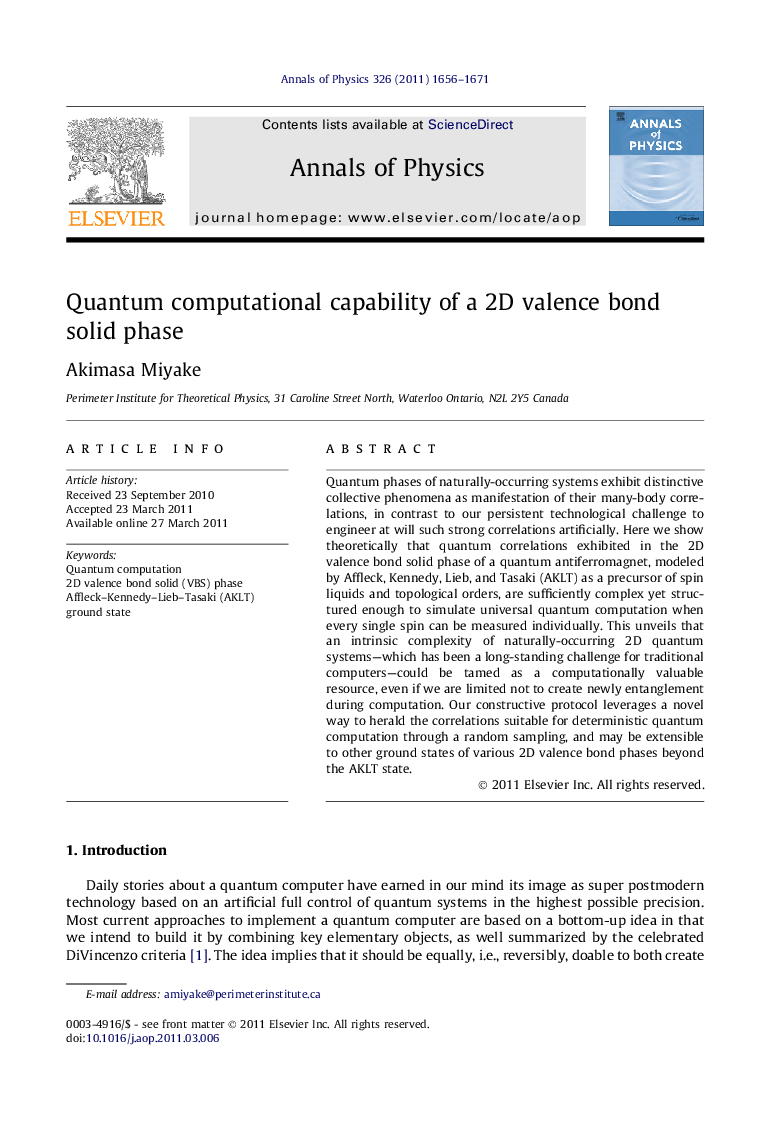| Article ID | Journal | Published Year | Pages | File Type |
|---|---|---|---|---|
| 1857496 | Annals of Physics | 2011 | 16 Pages |
Quantum phases of naturally-occurring systems exhibit distinctive collective phenomena as manifestation of their many-body correlations, in contrast to our persistent technological challenge to engineer at will such strong correlations artificially. Here we show theoretically that quantum correlations exhibited in the 2D valence bond solid phase of a quantum antiferromagnet, modeled by Affleck, Kennedy, Lieb, and Tasaki (AKLT) as a precursor of spin liquids and topological orders, are sufficiently complex yet structured enough to simulate universal quantum computation when every single spin can be measured individually. This unveils that an intrinsic complexity of naturally-occurring 2D quantum systems—which has been a long-standing challenge for traditional computers—could be tamed as a computationally valuable resource, even if we are limited not to create newly entanglement during computation. Our constructive protocol leverages a novel way to herald the correlations suitable for deterministic quantum computation through a random sampling, and may be extensible to other ground states of various 2D valence bond phases beyond the AKLT state.
► Our model is the 2D valence bond solid phase of a quantum antiferromagnet. ► Universal quantum computation is processed by measurements of quantum correlations. ► An intrinsic complexity of strongly-correlated quantum systems could be a resource.
